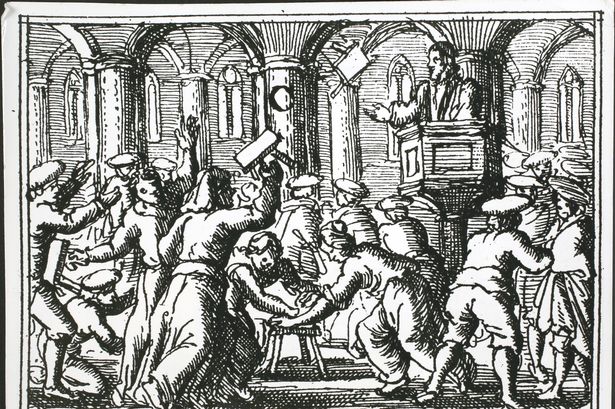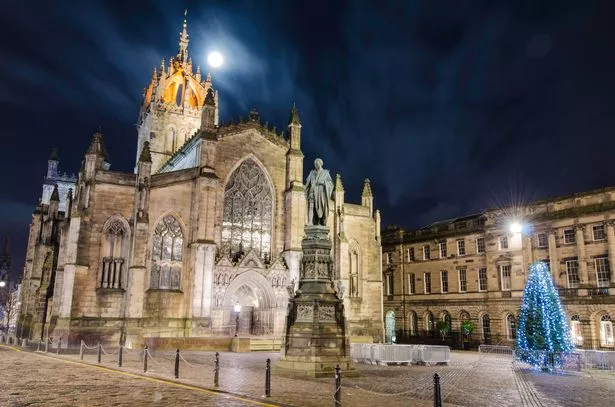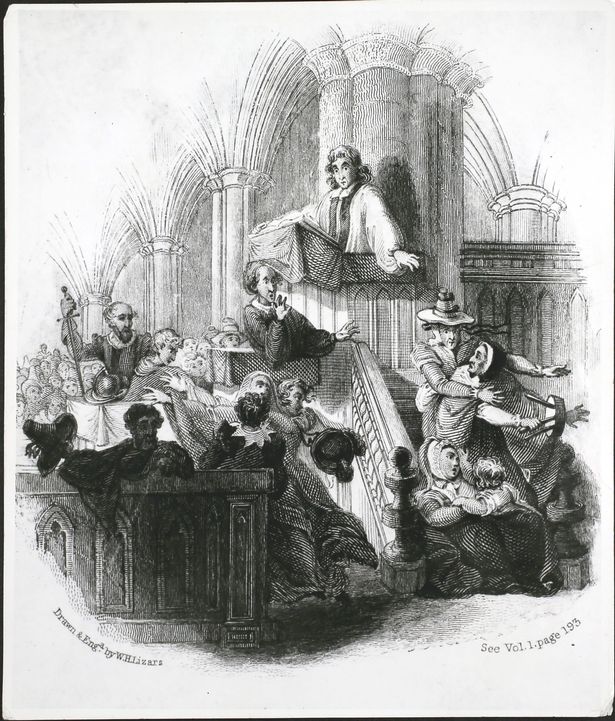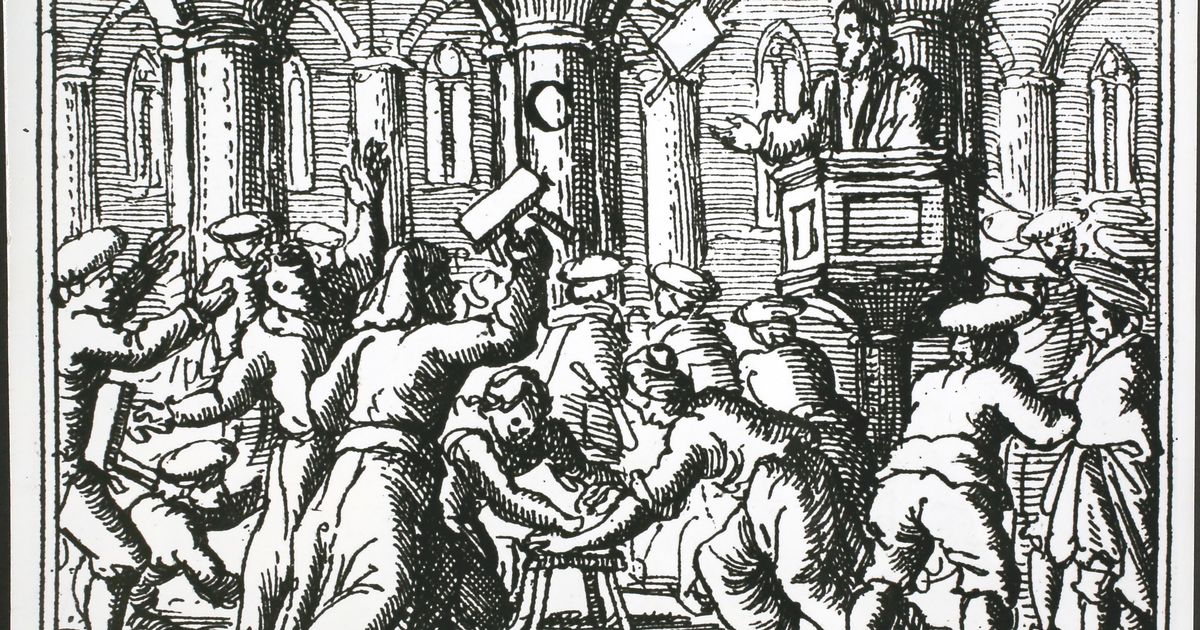King Charles I’s push for religious reforms in Scotland enraged the Edinburgh mob and lit the fuse for the Wars of the Three Kingdoms Riot In St. Giles Church Edinburgh, Jenny Geddes Tghrew A Stool At Bishop Lindsay When He Tried To Read Laud ‘s Service Book, St.Giles Church, Edinbergh, circa 1637. (Photo by Hulton Archive/Getty Images)(Image: Hulton Archive/Getty Images)
Riot In St. Giles Church Edinburgh, Jenny Geddes Tghrew A Stool At Bishop Lindsay When He Tried To Read Laud ‘s Service Book, St.Giles Church, Edinbergh, circa 1637. (Photo by Hulton Archive/Getty Images)(Image: Hulton Archive/Getty Images)
Tucked away in the National Museum of Scotland sits a modest wooden stool that many visitors to Edinburgh may walk past without a second glance. But this unassuming object holds a remarkable story, one that sparked a chain of bloody events that would reshape not just Scotland, but the British Isles and the wider western world.
Tourists exploring the capital’s rich history might also come across a bronze replica of the same stool, sitting prominently in the centre of St Giles’ Cathedral, one of the most significant churches in Scotland, Scottish Daily Express reports.
Its presence there commemorates a pivotal moment in 1637, during the reign of King Charles I. The monarch ruled over England, Scotland and Ireland, having inherited the united crowns from his father, James VI of Scotland and I of England.
While both England and Scotland were Protestant nations at the time, Charles was a divisive figure, widely regarded as a religious reformer with Catholic leanings, a stance that would ignite deep unrest across the kingdoms.
 St Giles’ Cathedral was the setting of a protest that helped ignite the Wars of the Three Kingdoms(Image: Getty Images)
St Giles’ Cathedral was the setting of a protest that helped ignite the Wars of the Three Kingdoms(Image: Getty Images)
Four years earlier, King Charles I returned to his native Scotland for the first time in decades, arriving for his long-delayed coronation at St Giles’ Cathedral. But any goodwill was quickly dashed when he insisted the service follow the Anglican tradition, to the dismay of many Scots.
The situation worsened when Charles introduced a new prayer book, closely modelled on the English Book of Common Prayer, without seeking approval from either the Scottish Parliament or the Kirk.
On Sunday, July 23, 1637, tensions finally erupted. As the Dean of St Giles’, James Hannay, read aloud the new liturgy for the first time, an Edinburgh market trader named Jenny Geddes stood up and launched her folding stool at him in fury.
She is said to have shouted: “De’il gie you colic, the wame o’ ye, fause thief; daur ye say Mass in my lug?”, or, “The Devil give you colic, the hide of you! False thief; how dare you say Mass in my ear!”
Her act of defiance ignited chaos inside the church. Bibles, stones, sticks and more stools flew through the air as a full-blown riot broke out, spreading across the city. Despite the uproar and the looming threat of civil war, Charles refused to reverse course.
 Jenny Geddes In St. Giles Cathedral, From ‘Tales Of A Grandfather’ Being Stories From The History Of Scotland, Edinburgh. (Photo by Hulton Archive/Getty Images)(Image: Hulton Archive/Getty Images)
Jenny Geddes In St. Giles Cathedral, From ‘Tales Of A Grandfather’ Being Stories From The History Of Scotland, Edinburgh. (Photo by Hulton Archive/Getty Images)(Image: Hulton Archive/Getty Images)
The unrest culminated in the signing of the National Covenant, a powerful declaration that rejected the new prayer book and laid the groundwork for years of religious and political upheaval.
The uproar sparked by Jenny Geddes’ stool-throwing protest would go on to shape British history in dramatic fashion.
The First Bishops’ War between Scotland and England soon followed, ending in a costly stalemate for King Charles and his Scottish Royalist supporters.
With his coffers running dry, Charles appealed to Catholic Spain for assistance and recalled the English and Irish parliaments in a desperate bid to raise funds.
But the Second Bishops’ War proved an even greater disaster. The Scots briefly seized control of Northumberland and County Durham, and following a Catholic uprising in Ireland, Parliament had had enough. Civil war broke out in England in 1642.
So who exactly was Jenny Geddes?
Janet “Jenny” Geddes was a market trader in Edinburgh’s Old Town. Like many others, she brought her own stool to church each Sunday. But while her act of rebellion, throwing the stool at the Dean of St Giles’, has become legendary, some historians doubt it ever truly happened.
Some argue it was a symbolic tale to capture the anger stirred by Charles I’s religious reforms. Others suggest the protestors may have been male apprentices disguised in women’s clothing.
Whatever the truth, Jenny Geddes became a Protestant folk hero, so much so that Robert Burns named his horse after her. In 1992, her memory was honoured with a bronze sculpture of her stool, presented to St Giles’ by a group of Scottish women.
 Join the Daily Record WhatsApp community!
Join the Daily Record WhatsApp community!
Get the latest news sent straight to your messages by joining our WhatsApp community today.
You’ll receive daily updates on breaking news as well as the top headlines across Scotland.
No one will be able to see who is signed up and no one can send messages except the Daily Record team.
All you have to do is click here if you’re on mobile, select ‘Join Community’ and you’re in!
If you’re on a desktop, simply scan the QR code above with your phone and click ‘Join Community’.
We also treat our community members to special offers, promotions, and adverts from us and our partners. If you don’t like our community, you can check out any time you like.
To leave our community click on the name at the top of your screen and choose ‘exit group’.
If you’re curious, you can read our Privacy Notice.
Amid the chaos of rebellion and war, a relatively unknown soldier and MP named Oliver Cromwell rose to power.
Charles I was eventually executed in 1649, and the 17th century descended into a bloody period of upheaval known as the Wars of the Three Kingdoms. After years of turmoil, the monarchy was restored in 1660.
Yet peace did not last. The Catholic Stuart line was eventually overthrown in the Glorious Revolution of 1688, ushering in Protestant rule and giving rise to the Jacobite movement, as well as uprisings in North America.
The ripple effects continued, leading to the Act of Union, the birth of the British Empire, the American War of Independence, and the Industrial Revolution.
And it all began with a single stool, flung across a church in Edinburgh.
